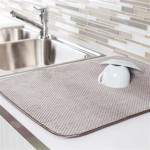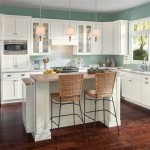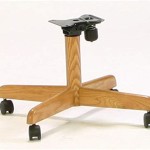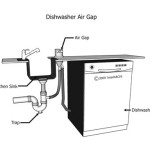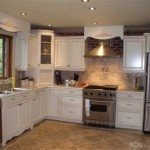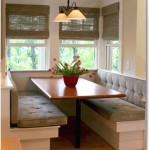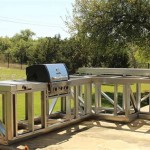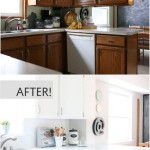Cost To Install Kitchen Cabinets: A Comprehensive Guide
Kitchen cabinets are a significant investment for any homeowner, impacting both the functionality and aesthetic appeal of the space. Understanding the cost associated with installing kitchen cabinets is crucial for budgeting and planning a successful kitchen renovation project. This guide provides a comprehensive overview of the factors influencing installation costs, different cabinet types, and strategies for managing expenses.
The cost to install kitchen cabinets can vary widely depending on a multitude of factors. These factors can be broadly categorized into material costs, labor costs, and project-specific considerations such as the size of the kitchen, the complexity of the design, and any necessary plumbing or electrical work.
One of the primary drivers of cost is the style and material of the cabinets chosen. Stock cabinets, being pre-made and readily available, are typically the most affordable option. Semi-custom cabinets offer a balance between cost and customization, allowing for some modifications in size and style. Custom cabinets, designed and built to specific measurements and preferences, represent the highest price point due to the specialized labor and materials involved.
The condition of the existing kitchen also plays a role in the overall cost. If the existing cabinets are being replaced, demolition and disposal will add to the expenses. Similarly, if the layout of the kitchen is being significantly altered, requiring changes to plumbing or electrical systems, the project cost will increase.
This guide aims to provide clarity on these various cost factors, enabling homeowners to make informed decisions about their kitchen cabinet installation project.
Key Factors Influencing Kitchen Cabinet Installation Costs
Several key factors contribute to the overall cost of installing kitchen cabinets. These factors need to be carefully considered when creating a budget and planning the project.
Cabinet Material and Style
The choice of cabinet material and style significantly impacts the overall cost. Different materials have varying price points and levels of durability. Solid wood cabinets, such as oak, maple, or cherry, are generally more expensive than cabinets made of particleboard or plywood with a laminate or veneer finish. However, solid wood offers superior durability and longevity.
Cabinet style also affects the price. Elaborate designs with intricate details, such as raised-panel doors or custom moldings, will be more expensive than simpler, more contemporary designs. The type of finish applied, whether it's a paint, stain, or glaze, can also influence the final cost.
Furthermore, the hardware chosen, including knobs, pulls, and hinges, can contribute to the overall expense. High-end hardware made of solid brass or stainless steel will be more costly than standard options.
Labor Costs
Labor costs typically account for a significant portion of the total installation expense. These costs can vary depending on the region, the experience of the installer, and the complexity of the installation. Licensed and insured contractors generally charge higher rates than independent installers, but they also provide assurance of quality workmanship and protection against potential liabilities.
The scope of the installation also affects labor costs. Installing pre-assembled cabinets is generally less expensive than assembling and installing flat-pack cabinets. Additionally, any necessary modifications to existing plumbing or electrical systems will add to the labor costs.
It's recommended to obtain multiple quotes from different contractors to compare prices and services before making a decision. Ensure that the quotes are detailed and include all aspects of the installation, including demolition, disposal, installation, and any necessary modifications.
Kitchen Size and Layout
The size of the kitchen and the complexity of its layout directly impact the number of cabinets required and the difficulty of the installation. Larger kitchens naturally require more cabinets, increasing both the material and labor costs. Complex layouts with angles, islands, or peninsulas can also increase the installation time and complexity, leading to higher labor costs.
The existing condition of the kitchen can also influence the cost. If the walls or floors are uneven, additional work may be required to ensure that the cabinets are level and properly installed. Similarly, if there are any existing plumbing or electrical issues, these will need to be addressed before the cabinets can be installed.
Careful planning and design can help to minimize installation costs. Consider optimizing the layout to maximize storage space while minimizing the number of cabinets required. Simple, straightforward designs are generally less expensive to install than complex, custom designs.
Estimating the Cost of Different Cabinet Types
Different types of kitchen cabinets have varying price ranges, reflecting differences in material, construction, and customization options.
Stock Cabinets
Stock cabinets are the most affordable option, typically ranging from $70 to $200 per linear foot. These cabinets are pre-made in standard sizes and styles, offering limited customization options. Stock cabinets are readily available at most home improvement stores and are a good choice for budget-conscious homeowners who are willing to accept standard sizes and styles.
The installation of stock cabinets is generally less expensive than custom cabinets, as they are pre-assembled and easier to install. However, it's important to ensure that the cabinets fit properly within the existing kitchen space. Gaps or awkward fits may require additional modifications, which can add to the overall cost.
While stock cabinets offer limited customization, there are still options for personalizing the look and feel of the kitchen. Consider replacing the hardware with more stylish knobs and pulls or adding decorative moldings to enhance the appearance.
Semi-Custom Cabinets
Semi-custom cabinets offer a balance between cost and customization, typically ranging from $150 to $500 per linear foot. These cabinets are pre-made but offer some flexibility in terms of size, style, and finish. Semi-custom cabinets allow homeowners to modify the dimensions of the cabinets to fit their specific kitchen layout or choose from a wider range of door styles and finishes.
The installation of semi-custom cabinets is generally more expensive than stock cabinets, as they may require some modifications to fit properly. However, they offer greater flexibility in terms of design and functionality.
Semi-custom cabinets are a good choice for homeowners who want a more personalized kitchen design without the high cost of custom cabinets. They offer a good balance between affordability and customization.
Custom Cabinets
Custom cabinets are the most expensive option, typically ranging from $500 to $1,200 or more per linear foot. These cabinets are designed and built to specific measurements and preferences, offering unlimited customization options. Custom cabinets allow homeowners to create a truly unique and personalized kitchen design.
The installation of custom cabinets is the most expensive, as it requires specialized labor and expertise. Custom cabinets are typically built by skilled cabinetmakers who can ensure that they fit perfectly within the existing kitchen space. The installation process is often more complex and time-consuming than installing stock or semi-custom cabinets.
Custom cabinets are a good choice for homeowners who want a truly unique and high-end kitchen design and are willing to invest in quality materials and expert craftsmanship. They offer unmatched customization options and can significantly increase the value of the home.
Strategies for Managing Kitchen Cabinet Installation Costs
Several strategies can be employed to manage kitchen cabinet installation costs and stay within budget.
Careful Planning and Design
Thorough planning and design are crucial for managing costs. Spend time researching different cabinet styles and materials, considering the overall aesthetic of the kitchen and the desired functionality. Create a detailed layout of the kitchen, taking into account the placement of appliances, countertops, and storage areas.
Consider working with a professional kitchen designer to optimize the layout and maximize storage space. A designer can help identify potential cost savings and avoid costly mistakes.
Obtain multiple quotes from different contractors before making a decision. Ensure that the quotes are detailed and include all aspects of the installation, including demolition, disposal, installation, and any necessary modifications. Don't simply choose the lowest bid; consider the contractor's experience, reputation, and references.
DIY Demolition and Preparation
Homeowners can save money by handling some of the preliminary work themselves, such as demolition of existing cabinets and preparation of the kitchen space. Demolishing existing cabinets can be a time-consuming and messy job, but it can save on labor costs. Ensure that you take appropriate safety precautions, such as wearing protective gear and properly disposing of debris.
Preparing the kitchen space involves removing appliances, clearing countertops, and protecting floors and walls. Ensure that the walls are clean and smooth before the new cabinets are installed. Patch any holes or cracks and apply a fresh coat of paint if necessary.
However, it's important to be realistic about your skills and abilities. If you're not comfortable with demolition or preparation work, it's best to leave it to the professionals.
Consider Refacing Instead of Replacing
If the existing cabinet boxes are in good condition, consider refacing instead of replacing them. Refacing involves replacing the doors, drawer fronts, and hardware while keeping the existing cabinet boxes intact. This can be a more cost-effective option than replacing the entire cabinet system.
Refacing can significantly change the look and feel of the kitchen without the expense and disruption of a full cabinet replacement. It's a good choice for homeowners who are happy with the existing layout and storage capacity but want to update the style of their kitchen.
However, refacing may not be a suitable option if the existing cabinet boxes are damaged or in poor condition. In this case, it's best to replace the entire cabinet system.

Kitchen Remodel Costs In 2024 Including Labor Block Guides

Average Cost To Replace Cabinets Forbes Home

Kitchen Remodeling Cost Guide 2024 Sweeten Com

Cost To Install Kitchen Cabinets In 2024 Average Guide House Grail

What Do Kitchen Cabinets Cost Tips To Stay In Budget

The Cost Of Kitchen Cabinets For Your New

Cost To Install Kitchen Cabinets The Home Depot

Modular Kitchen Cost Per Sq Ft How Much Should You Budget

How To Find The Best Kitchen Cabinets 2024 Guide Forbes Home

How Much Does A Kitchen Remodel Cost 2024 Average
Related Posts

